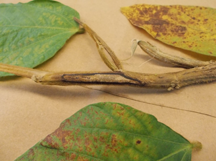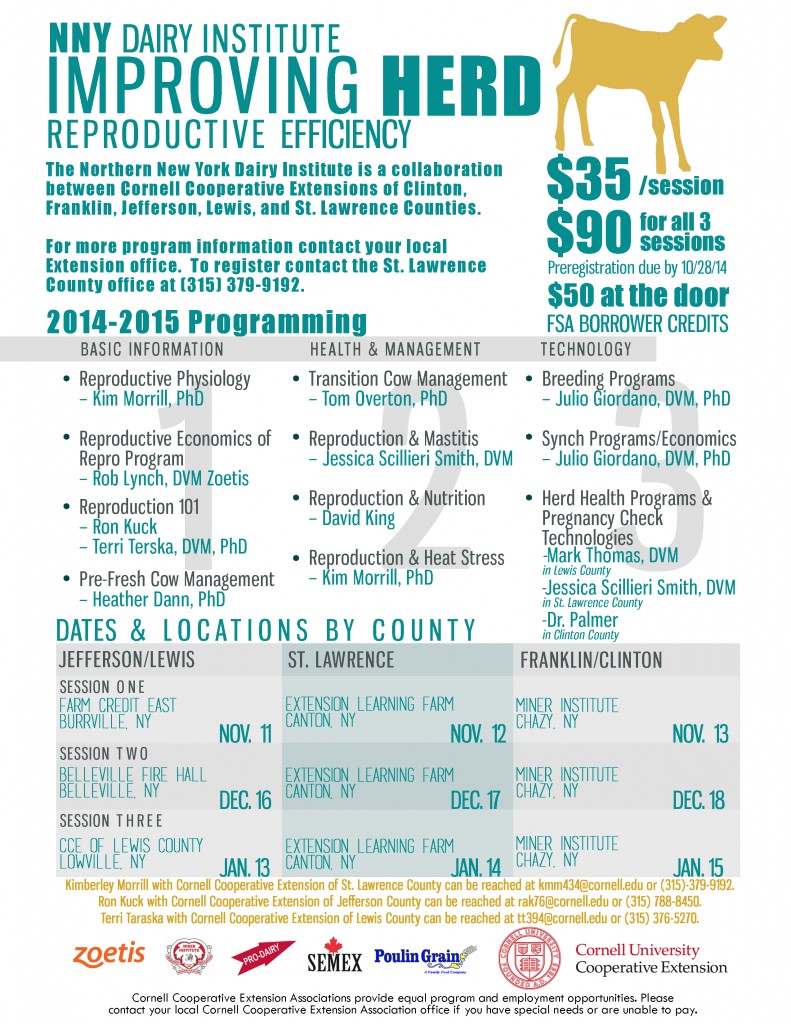 Canker on stem, and inter-veinal discoloration of leaves above the canker caused by northern stem canker. Photo: Jaime Cummings/Cornell University.
Canker on stem, and inter-veinal discoloration of leaves above the canker caused by northern stem canker. Photo: Jaime Cummings/Cornell University.
Click here to see the WWNY TV 7 report by Asa Stackel on this story
As part of the Northern New York Agricultural Development Program-funded Creating a NNY Corn and Soybean Disease Diagnosis and Assessment Database project, Cornell Cooperative Extension Field Crops Specialists Mike Hunter and Kitty O’Neil scouted soybean fields in the region. The following article, which appears in the current What’s Cropping Up? newsletter from Cornell University, shares details on the discovery of this crop disease in New York state.
Northern Stem Canker: A New Challenge for New York Soybean Producers
by Jaime A. Cummings and Gary C. Bergstrom
Cornell University School of Integrative Plant Science, Plant Pathology and Plant-Microbe Biology Section
As part of 2014 research projects supported by the New York Soybean Check-off Program and the Northern New York Agricultural Development Program, participating Cornell Cooperative Extension/CCE Educators have been scouting soybean production fields, recording observations on diseases, and sending plant samples to the Field Crop Pathology Laboratory at Cornell University for positive diagnosis of disease problems. A serious disease called ‘northern stem canker’ was confirmed for the first time in New York soybean fields. It showed up in samples from soybean fields in Jefferson, Livingston, Niagara, Ontario, Orleans, Seneca, and Wayne Counties collected by CCE Educators Mike Hunter, Mike Stanyard and Bill Verbeten.
The disease was diagnosed at Cornell based on characteristic symptoms and the laboratory isolation of the causal fungus and confirmation of a portion of its DNA sequence.
Soybeans are also being scouted in other areas of New York in 2014, but so far this disease has not been detected outside of the seven counties mentioned above.
Northern stem canker (NSC) is caused by the fungus Diaporthe phaseolorum var. caulivora and differs from a related fungus, Diaporthe phaseolorum var. meridionalis, that causes southern stem canker throughout the southern U.S. NSC occurs in most Midwestern states and in Ontario, but this is, to our knowledge, the first confirmation in New York or the northeastern U.S. Reported yield losses in the Midwest have ranged from minor to in excess of 50%, so the presence of the pathogen is considered a significant factor for soybean production.
Click here for NNYADP press release
